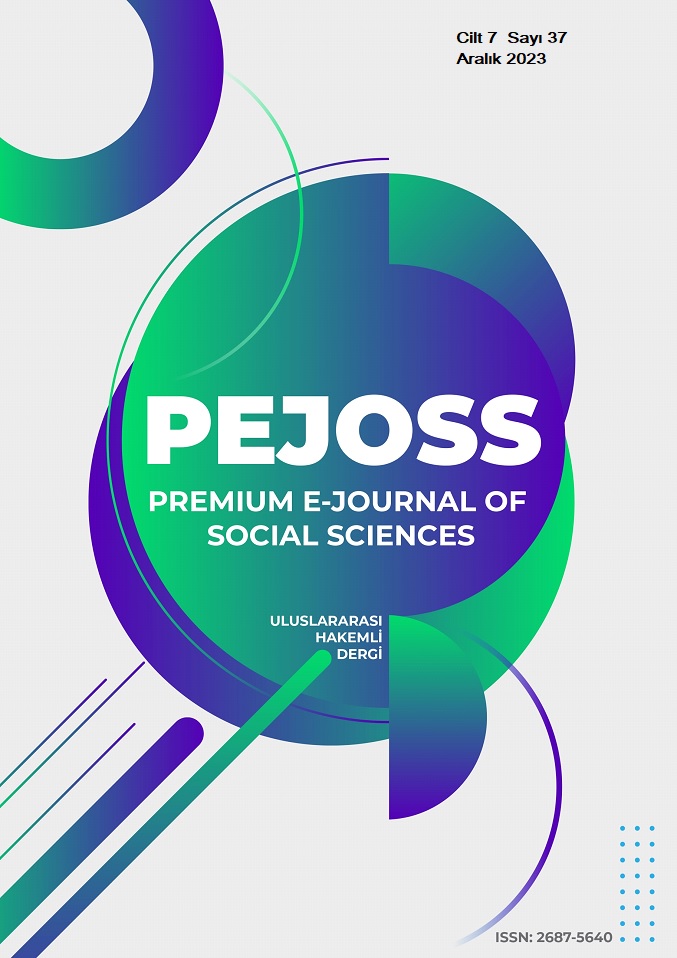A Musical Glance Upon The Melodie Apres Un Reve By Faure
DOI:
https://doi.org/10.5281/zenodo.10459223Keywords:
Faure, Apres un Reve, melodieAbstract
Gabriel Urbain Faure, a composer of late Romanticism linked with modernism, is one of the leading French melodie composers of his genre. Melodie can be described as a French art song, similar to German lied. Harmonic progressions, chromatic shifts and sudden modulations are often seen in Faure’s music, also giving high importance to nuance and interpretation. Especially his melodie called Apres un Reve Op. 7 No. 1 is very popular because of its melancholic musical structure and romantic text. In this paper, Apres un Reve is analyzed through its harmonic structure, tonality, and the relationship between the music and the poem. The story is about a dream, also indicated by the title of the melodie. The dream is so unique and heavenly that the singer does not want to wake up and wishes to continue to see the beloved in this magical and mysterious atmosphere. The piece is originally in C minor key and has a strophic structure since the melody and the rhythm are repeated throughout the piece. Chromaticism and complex chords can easily be observed throughout the piece. The time signature of the music is 3/4, and the tempo is andantino. Triplets are often used in the music, creating a hasty atmosphere, or embellishing the beautiful elements of the poem. This melodie will definitely be performed in musical environments continuously because of Faure’s impressive approach to French Romanticism.
Downloads
References
Bru Zane (2023). Après un rêve. https://www.bruzanemediabase.com/en/exploration/works/apres-reve-gabriel-faure
ClassicfM (2023). Gabriel Faure. https://www.classicfm.com/composers/faure/
Combrink, A. (2023). Apres un Reve. Op. 7 No. 1. https://www.albertcombrink.com/genres/apres-un-reve-op-7-no-1-gabriel-faure/
De Savage, H. (2017). Reimagining Fauré’s Solo Vocal Music: New Editions and Recordings of the Songs and Vocalises. Nineteenth-Century Music Review, 14(2), 287-302. doi:10.1017/S1479409817000271
Delage, R. (2023). Gounod Charles, Le créateur de la mélodie française. https://www.universalis.fr/encyclopedie/charles-gounod/2-le-createur-de-la-melodie-francaise/
Dibbern, M. (2015). Vocal Music by Fauré. Notes, 72(1), 221–226.
Encyclopaedia Britannica (2023). Gabriel Faure. https://www.britannica.com/biography/Gabriel-Faure
Feeney, A. (2023). Composition: Gabriel Fauré Après un rêve ("Dans un sommeil"), song for voice & piano, Op. 7/1 https://www.allmusic.com/composition/apr%C3%A8s-un-r%C3%AAve-dans-un-sommeil-song-for-voice-piano-op-7-1-mc0002369732
Gordon, T. (1999). Regarding Faure (1st ed.). Routledge. https://doi.org/10.4324/9781315078533
Johnson G. and Stokes, R. (2000). A French Song Companion. Oxford Press.
Kimball, C. (2006). Song: A Guide to Art Song Style and Literature. Milwaukee: Hal Leonard Corporation.
Orledge, R. (1979). Gabriel Fauré. London: Eulenburg Books.
Oxford Lieder (2023). Apres un Reve. https://oxfordsong.org/song/apr%C3%A8s-un-r%C3%AAve
Phillips, E. R. (1993). Smoke, Mirrors and Prisms: Tonal Contradiction in Fauré. Music Analysis, 12(1), 3–24. https://doi.org/10.2307/854073
Redfern, N. (2015). Music Through the Microscope Volume 5, Gabriel Faure, Apres un Reve, A Musical Analysis. https://www.nickredfern.co.uk/cfpl/Gabriel_Faure_Apres_un_reve_sample.pdf
Richter, M. (2023). The Art of French Song — Three Collections. https://www.lafolia.com/the-art-of-french-song-three-collections/
Sabar, G. (2013). Liedler ve Ozanlar. Pan Publishing.
Sobaskie, J. (2006). Fauré. Nineteenth-Century Music Review, 3(2), 191-197. doi:10.1017/S1479409800000719
Tarasti, E. (2011). Musical Signification: Essays in the Semiotic Theory and Analysis of Music, Approaches to semiotics. Walter de Gruyter & Co.
Downloads
Published
How to Cite
Issue
Section
License
Copyright (c) 2023 Premium e-Journal of Social Science (PEJOSS)

This work is licensed under a Creative Commons Attribution 4.0 International License.


